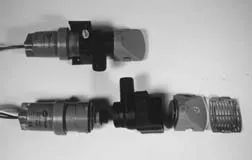The second you drop a loaded oil filter into your bilge, you realize that the most important piece of gear on your boat is the bilge absorber. If you’re prepared, you already have one strategically placed under the filter, or at least somewhere under the engine. Even then, any errant oil will very quickly turn all the surfaces of the bilge a slick gray-black. It will foul the bilge pump, it will slosh up against the undersides of the floorboards, and it will coat every wire and connection.
An oil or fuel spill has to be cleaned up by hand—pumping it overboard is criminal, as well it should be. A bad spill, or a small spill that’s left to slosh around, is a nightmare, and some bilges, particularly those with rough fiberglass or wood surfaces, never look the same again.
We wanted to find out which of the oil-absorbent products on the marine market work best, so we ordered a variety of them and put them in plastic bins filled with six gallons of water, a half a cup of antifreeze, and one quart of oil. We then let the bins sit for about two months in the back of the office, regularly jostling and jouncing them to keep things sloshing.
A couple of the products worked quickly and very well. A couple worked slowly and fairly well. One didn’t seem to work much at all.
ABSORBER TYPES
There are two basic types of absorber. One type absorbs “mechanically,” by means of wicking and adsorption or absorption. (“Adsorption” means that a liquid is attracted and adheres only to the outside of a surface, while “absorption”… well, you know what absorption means.) The other type absorbs the fluid and then reacts with it chemically or biologically, converting it into another state.
In both cases, the products are intended to absorb only oil or fuel—not water.
The products come in three forms—thin sheets, pillows or packets, and rolls or socks (mini booms).
The sheets are intended to be used both during work projects and for long-term maintenance. The pillows and rolls are intended more for long-term absorption; they are typically left in the bilge for several months or one boating season.
For more details on oil absorption products as well as other cleaners for specific jobs on your boat, purchase and download Practical Sailor’s ebook, Essential Marine Cleaners today.
To read even more about the cleaning and maintenance of all your boating surfaces, buy the entire three-part series for the price of two! Available for purchase and download is Practical Sailor’s ebook series, Marine Cleaners. This three volume set contains the ebooks Gelcoat Restoration & Maintenance, Essential Marine Cleaners, and Specialty Marine Cleaners.




































